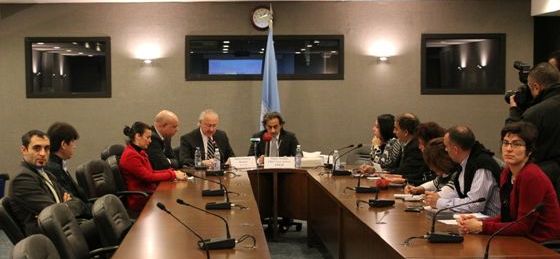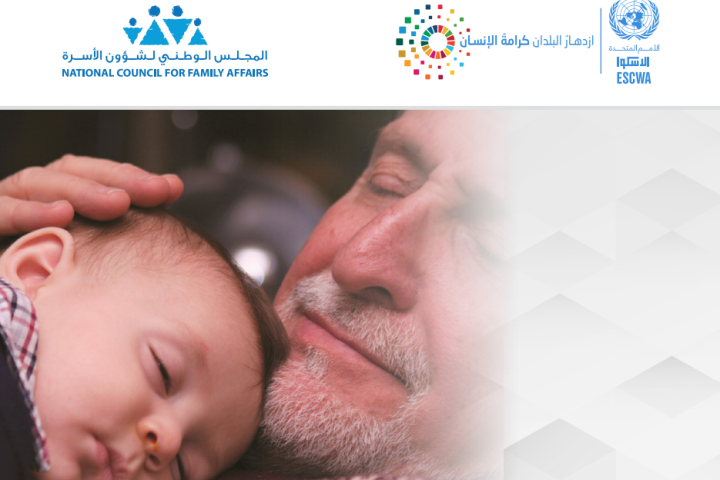ESCWA and
the UN Information Centre in Beirut (UNIC-Beirut) launched the 2011 World
Economic Situation and Prospects report, published yearly by the UN Conference
on Trade and Development (UNCTAD).
The
conference featured a statement by UNIC Beirut Director Bahaa Elkoussy, and a
detailed regional presentation by Simon Neaime, the Head of the Economic
Analysis Section in ESCWA’s Economic Development and Globalization Division.
In his
introduction of the report, Elkoussy said it represented a multilateral effort exerted
yearly by several UN organizations, and is considered one of the most important
economic reports issued by the international body. The report is divided along
four chapters: global outlook; international trade; financial flows to
developing countries; and regional developments and outlook. The report tackles
the economic situation and growth in the world in general, and in the western
Asia region, amid the many challenges faced by this region and other areas of
the globe. It also relays economic forecasts for the coming year.
For his part,
Neaime said that Western Asia economies will grow by 4.5 per cent on average
in 2011 and 2012, continuing a solid performance from 2010. While solid, the
pace of growth is still below the average rate in the years before the global
economic crisis, as the report considers. The report also presents issues of special
interest to the region, such as achieving the Millennium Development Goals.
He added that according to the report, global
recovery may be endangered by high unemployment, fiscal austerity measures, and
the possibility of currency wars. Global recovery has been losing momentum
since mid-2010, and all indicators point to the weakness of global economic
growth. The United
Nations forecasts through the report that growth of world gross product (WGP) will be 3.1 per cent for 2011 and 3.5 per cent for 2012, which is much less than the required percentages to recover job opportunities lost in the crisis.
Nations forecasts through the report that growth of world gross product (WGP) will be 3.1 per cent for 2011 and 3.5 per cent for 2012, which is much less than the required percentages to recover job opportunities lost in the crisis.
A Brief on report: Oil
According to the report, higher oil prices in
countries such as Saudi Arabia and the United Arab Emirates, as well as strong
private consumption in non-fuel exporting countries, were the main drivers of
growth in the region.
Bouncing back from a 4.7 per cent contraction in
2009, Turkey
managed to raise its gross domestic product (GDP) by 7.4 per cent in 2010,
supported by strong private consumption and investment growth. Lebanon is
projected to post 5.0 per cent growth for each of the next two years, also
driven by private consumption.
Non-oil
sectors are becoming increasingly important drivers of economic growth even in the fuel-exporting
countries. In Saudi
Arabia, both government
consumption and public investment were able to contribute to an overall
balanced performance. The picture is similar in the United Arab Emirates, with
government spending underpinning robust growth in 2011. As a payback to the
country’s economic diversification strategy, the services sector, particularly
tourism, and the manufacturing sector have also become important drivers of
economic growth.
The situation
is different in Yemen.
While its gas production capacity has expanded, Yemen’s overall economic
performance is clouded by a water shortage which is hampering agricultural
production, as well as by political conditions.
Inflation remains low and employment is improving, though still a concern
The employment situation generally remains
challenging in the region, though there are some signs of improvement.
Unemployment rates have stabilized, thanks to the revival of international
trade, says the UN report. Turkey’s unemployment rate is expected to fall to
below 13 per cent in 2011, down from more than 14 per cent in 2009.
Inflation has slowed down considerably from its peak
in mid-2008. Iraq, Jordan and Qatar went through deflation in
2009. In the case of Qatar,
deflation persisted in 2010. The region should expect positive but limited
inflation rates in 2011 because of increasing food prices and a rise in public
sector wages, especially in the countries of the Gulf Cooperation Council
(GCC).
In line with the inflation outlook, the report says,
monetary policies will vary as well from country to country. Turkey is expected
to increase its policy interest rates in reaction to rising price pressures.
Countries such as Jordan, Kuwait and Qatar are expected to maintain their
policy rates low through 2011.
Budgetary prudence and external surpluses
Governments in the region have remained generally
prudent in managing their budgets. GCC countries increased government spending
in 2010, but their fiscal policies are expected to become somewhat less
expansionary in 2011. Fuel exporters will continue to post solid budget
surpluses in 2011, however, albeit somewhat smaller than those of 2010.
Non-fuel exporters, in contrast, will be facing increasing budget constraints.
Both Jordan and Lebanon, for
example, will continue to run budget deficits of about 10 per cent of GDP in
2010 and 2011. Rising public debt and higher interest payments will limit the
fiscal space in these countries in the near outlook.
External balances in the fuel-exporting countries
will continue to show solid surpluses in 2011. In Saudi Arabia, for example, the
current-account surplus is forecast to reach 10 per cent of GDP in 2011. By
contrast, non-fuel exporters are expected to see their trade deficits increase
further, because of rising import demand along with the economic recovery.
Sharper volatility and a possible drop in oil
prices, the UN report says, remain major downside risks for fuel exporters.
Economic performance of non-fuel exporters will be directly affected by weaker
growth in the major developed economies. Consequently, any renewed economic
slowdown in these export markets holds the potential to significantly alter the
growth trajectory in the region.




